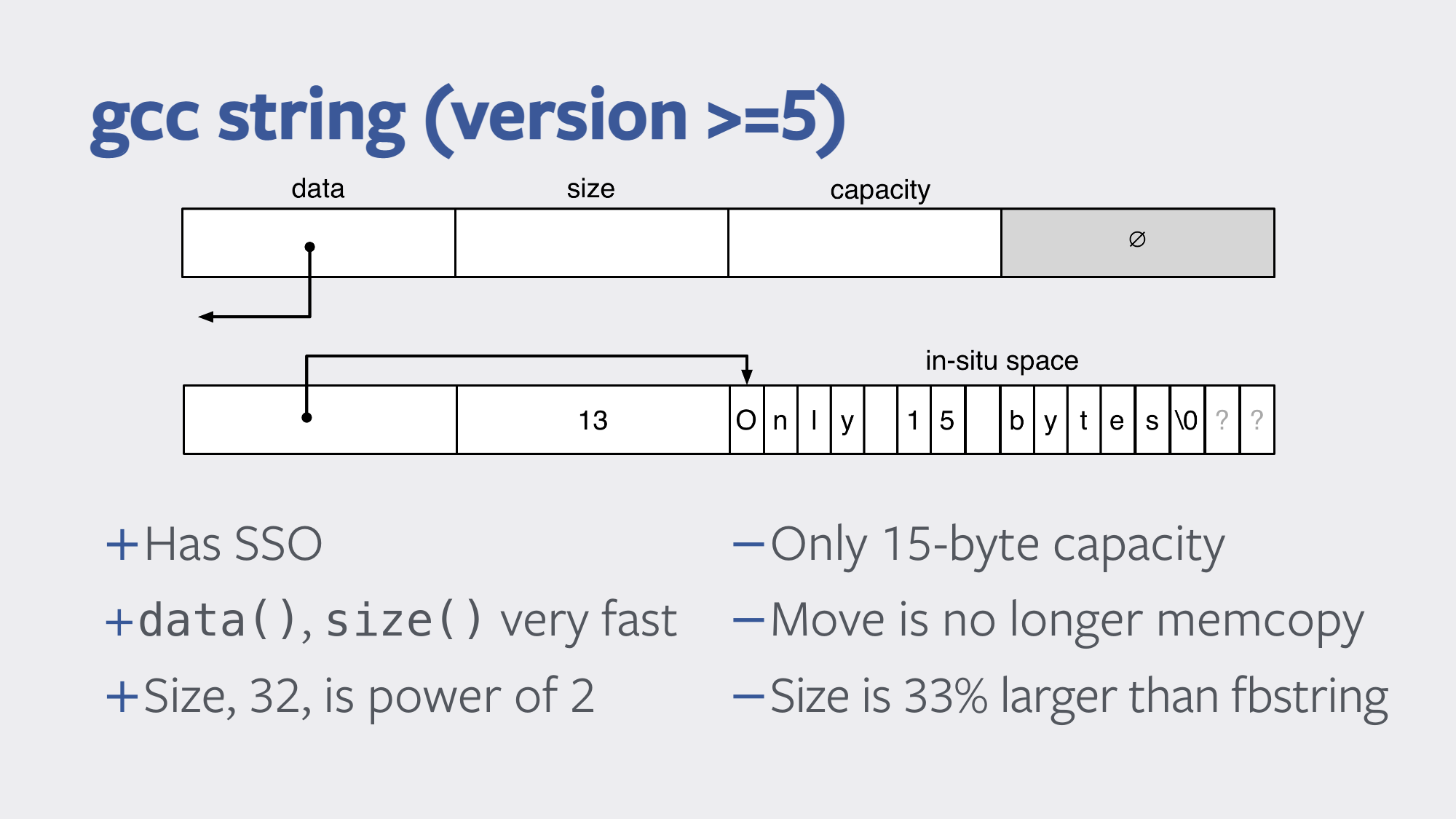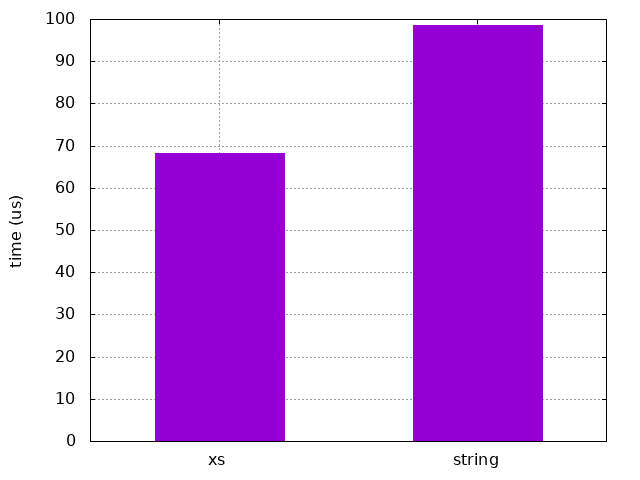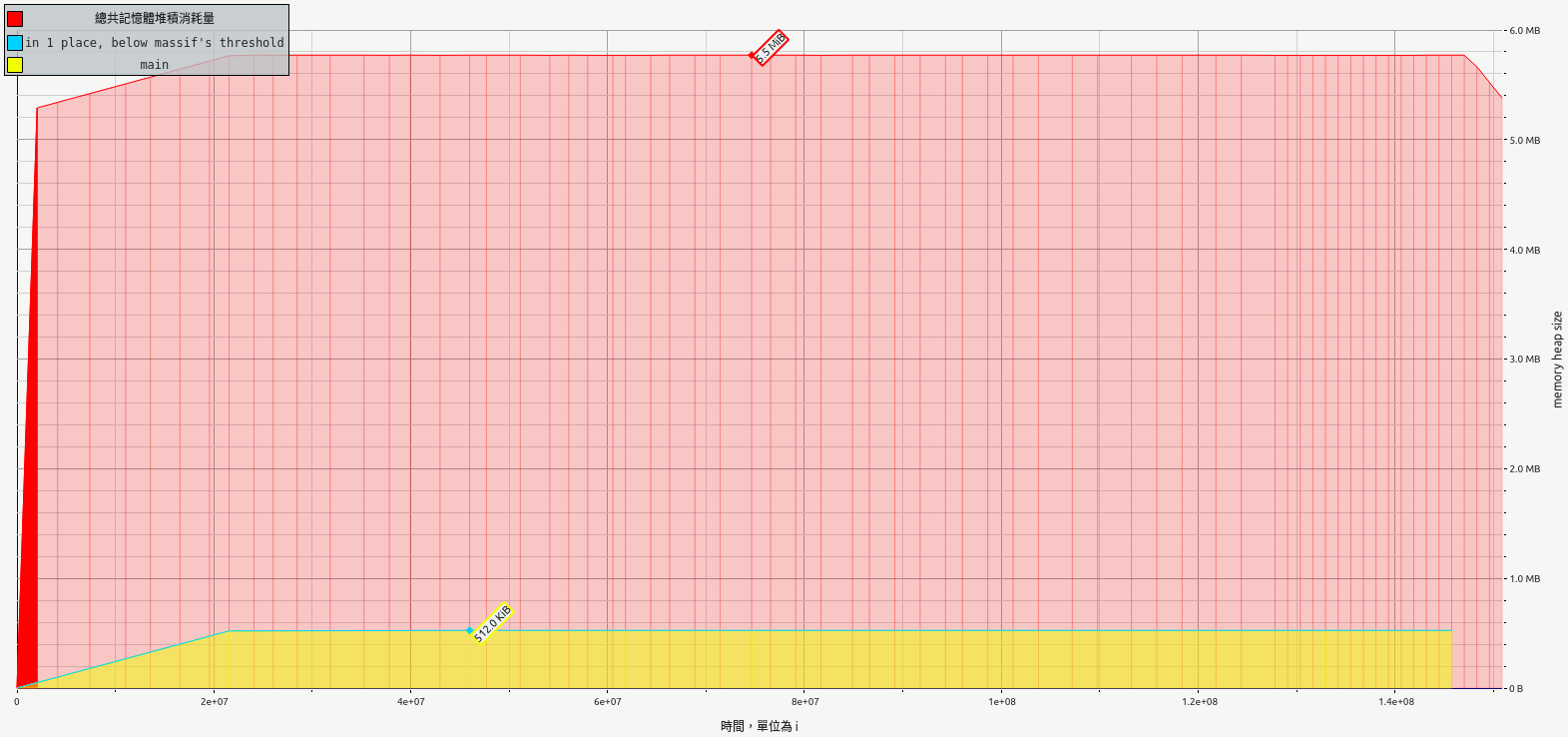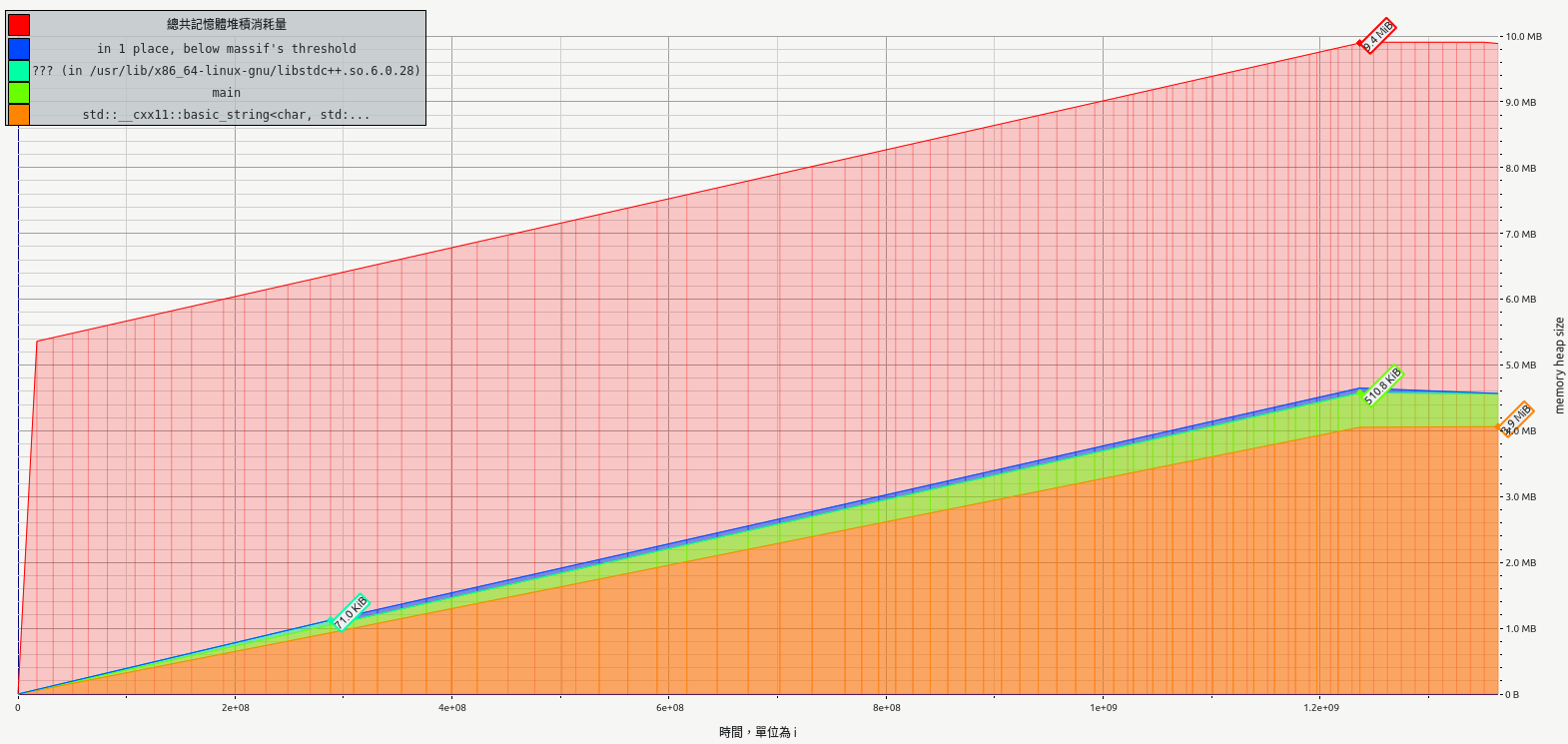2021q1 Homework3 (quiz3)
contributed by < 93i7xo2 >
Source: J07: quiz3
- 解釋上述程式碼運作原理,並提出改進方案;
- 以上述程式碼為基礎,提供字串複製 (應考慮到 CoW) 的函式實作;
- 設計實驗,確認上述字串處理最佳化 (針對空間效率) 帶來的效益,應考慮到 locality of reference,善用 GDB 追蹤和分析,確認字串的確符合預期地配置於 stack 或 heap;
- 嘗試將 quiz2 提到的 string interning 機制整合,提出對空間高度最佳化的字串處理工具函式庫
- 在 Linux 核心原始程式碼中,找出類似手法的 SSO 或 CoW 案例並解說;
運作原理
資料結構
xs_tmp
建立指定字串的 xs 物件。
相關技巧可參照 hankluo6 的解釋
xs_free
釋放中、長字串在 heap 所佔有的空間,由於儲存的字串可被其他 xs 物件所參照,因此只有在 refcnt = 0 時候才釋放。
xs_cow_lazy_copy
此函式目的是用來為 refcnt >= 2 的長字串分配新的記憶體空間,實現 copy on write。簡單說,修改 xs_copy 複製出後的物件前,必須呼叫此函式複製字串。
為了方便說明假設 x 為 refcnt = 2 的長字串。從 xs_trim 的一小段呼叫開始:
xs_dec_refcnt(x) 將附屬在長字串前的 refcnt 減一,xs_allocate_data 分配新的空間。x->size 有可能低於 LARGE_STRING_LEN,xs_allocate_data 為其分配中字串的空間,所以後續進行舊字串資料複製時,以 xs_data(x) 取得地址。最後將 *data 指向新字串地址。
原本 *data 所指向的舊空間沒有被釋放,依然被其他 xs 物件所使用。
xs_allocate_data
分配新空間給中、長字串。
常與 xs_new 一併使用
xs_trim
dataptr 與 orig 同樣作為 char * 指向真實字串存放地址 xs_data(x)。而 Printable characters 的範圍落在 010 0000~111 1110,這裡使用類似分頁的技巧,將前 4 bit 視為 index,後 3 bit 對應到 1 << x 的數值,例如 111 1110 => mask[15] = 1 << 6,利用
將同一 index 數值匯集在同一位元組,預先建表。假設源字串長度 m,欲去除的字集長度 n,這樣的查詢方式相較使用時間複雜度為 的雙層迴圈,只需 。
圖解 20~25 行操作
後續分別對字串紀錄長度。
xs_grow
作為 xs_concat 被呼叫的函式,目的是為 x 物件預留足夠的記憶體空間。is_ptr 的設置要在判斷後。
xs_concat
作為 xs.c 的核心,涵蓋大部分上述的函式呼叫。擴展 string 的空間使其足以容納下 prefix 和 suffix。
CoW 函數實作
xs_copy
從 xs_tmp 看到,xs 物件的其實在呼叫 xs_new() 前就存在於 caller 的 stack,這點可透過 gdb 觀察 xs_new() 返回的指標的指向和 stack frame 的關係。
同理,xs_free() 的功能也只是在重設 xs 物件的內容,並不會真的去執行 free(x),返回的 xs* 也非指向 malloc 新分配出的記憶體空間,而是參數 x 原本所指向的位置。
如果沒有考慮到上述情境,實作出的 xs_copy 可能在離開函式後依然存取 xs_literal_empty() 創立的物件,造成 Undefined behavior。用 cppcheck --enable=all 或是 gcc -fsanitize=undefined 均無法偵測到,而 gcc -O3 會做更深層的分析,勉強可作為靜態分析工具使用。
最後實作如下,仿造 xs_tmp 呼叫時傳入 &xs_literal_empty()。用 xs_is_large_string 來決定是否分配新的記憶體空間。
- 測試程式碼
- 輸出
xs v.s. libstdc++
gcc >= 5 後的 libstdc++ string 引入 SSO
即便如此,相同 capacity 下 24 bytes 的 xs 或 fbstring 仍然在空間上較 gcc string 少 33%。若將 xs 擴展為 32 bytes 使其容下以 10 進位表示的 64-bit 隨機數或 user ID (fbstring 的使用情境) 的短字串,與 gcc string 進行同樣的讀寫測試(隨機修改陣列中的字串),發現 string 耗時和 cache-misses 次數也較多。
-
測試環境
- Intel G6400 CPU, L1/L2/L3: 64KB/512KB/4MB
- g++ 9.3.0: libstdc++ 6.0.28
- gcc 9.3.0
-
測試結果
在 95% 信心水準下,
xs與string隨機修改字串所需時間。
觀察兩者的空間使用率
- 在
xs測試中,一開始 stack 上的 5MB 分給xs arr[131072]=4MB及uint32_t* tmp[131072]=1MB,後續 heap (黃) 512kB 配給tmp。
- 在
string測試中,heap (橘) 分配給string為每個字串 31 bytes,佔用 3.9MB (131072*31 bytes)。
整合 string interning
回顧 __cstr_data 的最佳化方法,起初定義 4 種型態
- PERMANENT
- INTERNING
- ONSTACK
- Others
接著看合併時的型態轉換
- 若欲合併的字串在 stack (ONSTACK),且合併產生的字串長度低於
CSTR_STACK_SIZE,複製到 stack 上預先配置好的空間。 - 若不符上條件,合併產生的字串長度仍低於
CSTR_INTERNING_SIZE,才儲存於預先配置空間的 interned table,此時字串型態設為 ONSTACK,否則新分配空間的字串型態設為 Others - Others 型態的字串實作 CoW。reference count 只有在使用
cstr_grab複製的字串時才會增加,但缺少如xs_cow_lazy_copy的實作。
xs 的 large string 有 CoW 的輔助,short string 實作 SSO,適合整合進 interned table 的應是 medium string,因此在 medium string 底下再細分新增一類 interned string,所有跟改變 capacity 相關的程式都需要改寫。
TODO
Linux 核心內的 CoW 案例
以 linux/fs/btrfs 為例。F2FS and BtrFS 指出,Btrfs 是以 B-Tree 為基礎,當插入新的節點時,先複製一份父節點,再指向修改後的新的節點,並使用 counter 來紀錄多少節點指向自己,這些 counter 存在於節點之外的 extent-tree。
如果以 refcount 下去搜尋,會發現不少結構裡都有此成員。以實作在 commit 16cdc 的 btrfs_delayed_node 為例:
以 btrfs_get_delayed_node 取得 inode 中的 delayed_node 時會將 refs+1,離開時呼叫 atomic_dec 將 ref-1。
This delayed node is still cached in the btrfs inode, so refs must be > 1 now, and we needn't check it is going to be freed or not.
從註解可猜到,當 ref 歸 0 時應該有對應的函式負責清理。下方 __btrfs_release_delayed_node 的 atomic_dec_and_test 就在目標變數減去 1 為 0 時回傳 true,接著刪除。
commit 16cdc commit message 說明 delayed node 的出現是為了解決 btrfs 頻繁對 b+ tree 插入 inode/directory name item/directory name index,於是使用兩個 list 來維護用來創建或刪除檔案的 delayed node,另一個用來維護等待被 worker 處理的 delayed nodes,在 delay nodes 高於閥值才會增加到 work queue。delayed node 內各有兩個 rbTree,分別管理即將插入或刪除到 b+ tree 的 directory name index 。採用 delayed node 的作法能改善效能。




